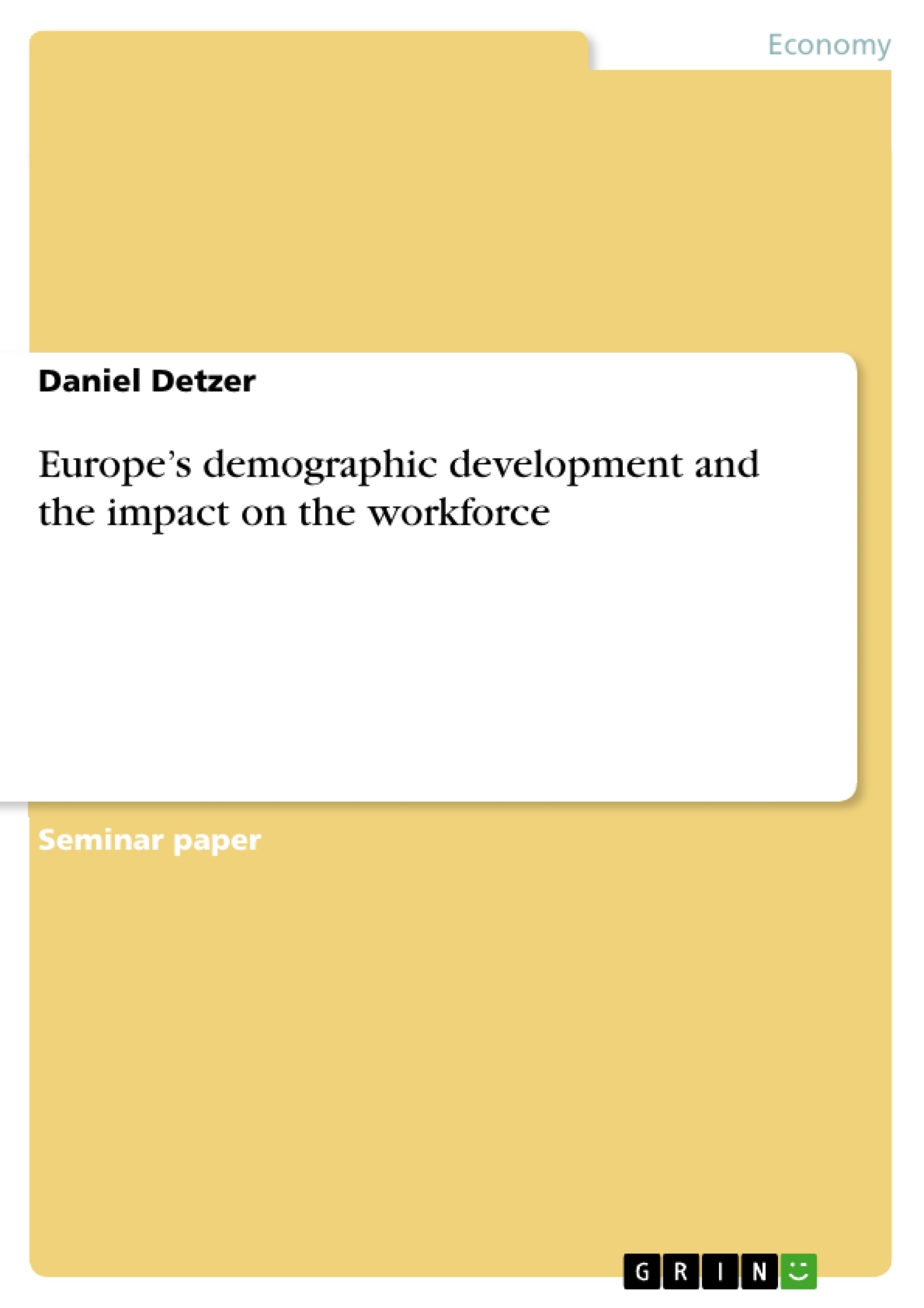Though EU commissar Špidla speaks, in 2006, about a “demographic time bomb” which needs to be disarmed1, a study suggests that back in 2003 52 percent of the German population has not even heard about the term “demographic change.” Even if these figures are a bit outdated they show that discussion concerning this topic continues between experts and politicians and has been a long-time taking to reach the broader populace. Nowadays, word has spread. The topic has become more pressing on political agendas, national and international summits. In the 2007 Adecco Fitness Survey, European companies invision the demographic change as the second biggest business challenge, following Globalization. The UN has been pressing the issue of ageing populations since the 1940s and forecasts that the number of people over 60 years old will have tripled by 2050. For the first time in history, this figure will exceed that of the number of children (0 – 14 years). However, these aggregated figures do not show that these developments have taken place differently across the globe. Europe is experiencing the most rapid ageing, and the number of old people is already higher than the number of young people. This may explain why demographic change now has such a high priority in EU policies. Nico van Nimwegen, deputy director of the Netherlands Interdisciplinary Demographic Institute notes that the ageing problem is the dominant challenge the EU is facing. He sees the implications of this trend and the need for action and policy change in various areas. Employment has been recognized as one of these target areas. The ageing of the population has important repercussions on the available labor force and thus impacts economic prospects as a whole.
This paper will analyze demographic changes and their impacts on the labor markets. It will begin with an overview of Europe’s demographic development and its driving forces. The subsequent impacts on the labor force will then be discussed followed by an overview of different proposed policy options and how they could help circumvent the consequences of demographic change. Here the goal shall not be to detail single policy measures, but to unveil areas in which policy action needs to be considered. Particular policies have to be chosen carefully by each country in accordance to its individual situation and institutional framework. Finally, the findings of this paper will be reviewed and a final conclusion will be given.
Inhaltsverzeichnis (Table of Contents)
- Introduction
- Europe's demographic development and the decline of the workforce
- The demographic development - overview of the main trends
- Mortality
- Fertility
- The baby-boom generation
- Ageing – changes in the labor force and the consequences
- Policy options - How to face the challenge?
- Promotion of higher fertility
- Immigration
- Higher productivity
- Higher labor-force participation rate
- Higher participation in the group of young workers
- Higher participation of females
- Higher participation of older workers
- The demographic development - overview of the main trends
Zielsetzung und Themenschwerpunkte (Objectives and Key Themes)
This paper analyzes demographic changes and their impact on labor markets. It provides an overview of Europe's demographic development and its driving forces, examines the subsequent impacts on the labor force, and explores various proposed policy options to mitigate the consequences of demographic change. The objective is not to detail specific policy measures but to identify areas where policy action is necessary. The paper emphasizes the need for countries to tailor their policies to their individual situations and institutional frameworks.
- Europe's demographic development and its impact on the labor force
- The consequences of an aging population on the labor force
- Policy options to address the challenges of demographic change
- The importance of tailored policy approaches for individual countries
- The need for long-term policy planning in light of demographic trends
Zusammenfassung der Kapitel (Chapter Summaries)
The first chapter introduces the topic of demographic change and highlights its increasing prominence on political agendas. It emphasizes the rapid aging of the European population and the need for policy action to address its implications, particularly in the area of employment.
Chapter two provides a detailed overview of Europe's demographic development, outlining key trends in mortality, fertility, and the baby-boom generation. It analyzes the impact of these trends on the age structure of the population and highlights the challenges posed by an aging workforce. This chapter also explores various policy options to address these challenges, including promoting higher fertility, encouraging immigration, boosting productivity, and increasing labor force participation rates.
Schlüsselwörter (Keywords)
Key terms and concepts explored in this paper include demographic change, labor force, aging population, fertility, mortality, immigration, productivity, labor force participation rate, policy options, and long-term policy planning.
- Quote paper
- Daniel Detzer (Author), 2009, Europe’s demographic development and the impact on the workforce, Munich, GRIN Verlag, https://www.grin.com/document/126579



